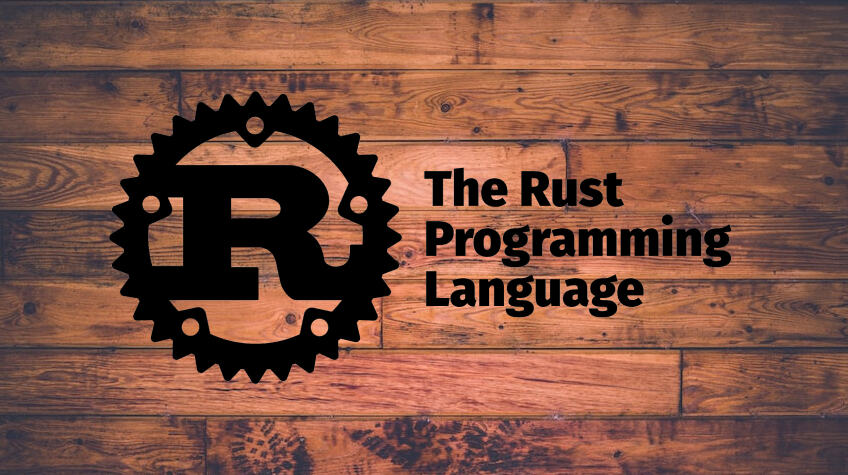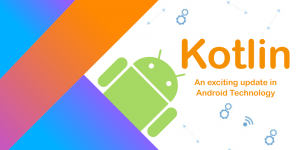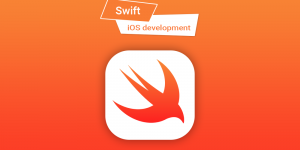
With Kotlin, we can create the perfect language to complement the JVM stack by incorporating syntactic sugar that helps make the code base less bloated. We wrote a short introduction to the project last year.
Also, there is an overview of Go that we created at the time we first started internal Go development. We have developed numerous applications entirely in Go, and we are happy that we could integrate Go as a technique since the benefits are evident during development.
In this state of euphoria, we are also keen to learn more about Rust as a language for programming and consider the purpose for which this relatively new language is for the job.
The initial point of reference for our attempts to assess Rust is the consistently highest ranking in the renowned Stack Over App Developers UK Survey released yearly.
Since 2016, Rust has been in the top spot in the most adored programming language category.
We aren’t able to let this happen and have taken an in-depth review of Rust, and we hope we can give an added benefit in terms of sustainability and quality.
The Features of Rust
- Rust is a general-purpose language suitable for all programming systems.
- Rust puts the primary elements on the balance of performance and stability.
- The compiler plays a vital role in this, as it’s opinionated and like Go, so he can tell what is acceptable and what is not.
- When building a codebase, compilers generally check to see if the code is compliant due to syntax and the types (at typing languages) and leave a range of possible errors to the runtime.
- With traditional languages like Java, C++, or Go, which are widely used by top web design companies, garbage collectors run at runtime in addition to the application logic. This automates memory management, and, in a nutshell, it releases obsolete memory units to be reused.
- Rust does not support garbage collection, and it can check at compile time an escape analysis that determines if the code will not cause any memory-related errors.
- That means Rust can produce lighter, more productive artifacts eliminating waste collectors.
- As a reward for garbage collection, Rust offers an understanding of ownership. A novice Rust programmer needs first to understand.
- Before we dive into the specifics of Rust, we should first listen to what is described in the official Rust documentation summarizes their language:
- Rust is the language of those who seek rapidity and stability in the language.
- We are referring to the speed in the programming you can develop using Rust and the rate with which Rust allows you to create them.
- Its Rust compiler’s checks assure stability via feature additions and code changes.
- This contrasts with the outdated and brittle code found in languages that still need these checks, which UK app developers are usually hesitant to alter.
- To achieve zero-cost abstractions and advanced features compiling to lower-level code in the same amount of time as manual code, Rust endeavors to make safe code faster and more readable.
- The Rust language hopes to support numerous other users, too the ones mentioned are only a small portion of the most significant users.
- Rust’s primary goal is to end the compromises that apps developers UK have been accustomed to for years to increase productivity, safety, efficiency, and comfort.
The Rust Programming Language Documentation, Introduction
One observes that the major issue in the creation of Rust was the way to attain the desired level of comfort for programming through abstraction and high-level characteristics, with attention to machine-level performance and the abstractions referred to as zero-cost.
To summarize the characteristics and advantages of Rust, it is possible to consider this list
- Consistent memory security, as assured by the highly regarded Rust compiler
- Explicit concurrency, parallelism, and concurrency by Data Ownership Model
- Development and Abstraction convenience for no cost. Now, we have the basics of the factors that make Rust shine.
For people who have never been confronted with machines-related concepts, One or the other idea might be new, and you need help dealing with it initially.
To understand this, we must first consider the most significant aspect of Rust, the ownership of the data model.
Installation using Rust Up
To install Rust, there is the tool chain known as Rust up.
With Windows machines, it’s enough that you download rust-init.exe and then run it. More information on this under https://forge.rust-lang.org/infra/other-installation-methods.html
Alongside rust up, the tool chain management itself executable shell script includes the following components:
- Rustics are the real Rust compiler that generates binary files using Rust, the source code.
- Rustfmt: a format binary that, like to go fmt, instantly changes the source code to match.
- Cargo can be described as the system for building and the manager of packages for Rust. We will use it to create our Rust projects and resolve any dependencies.
- STD: Lastly, the standard libraries for the language have been installed.
Hello b-nova!
A ‘Hello B-nova!’ A function is written fairly rapidly in Rust.
It is possible to complete your initial steps without installing Rust on your local machine and instead use the Rust Playground. Rust Playground.
Open the play area then, paste the code snippet into the Playground, and then click Run! It is easy to see the output from the build process and the final output once completed.
It follows the same structure and is a part of the language specification. It also learns to write if/else and for loops in Rust and what the various types of data are, etc.
Building using Cargo
Once we have set up an actual Rust application, the Cargo will be an essential element of the entire application lifecycle that is to be developed.
Verify that Cargo is installed correctly and running the current Rust version.
Cargo has been informed that we’d like to create a hello-nova initiative.
Cargo is now in charge and gives us the complete list.
Cargo does not just create the directory, but it also offers a canonical structure for the project.
Before we start the main.rs, we will briefly review the Cargo. Tool and discuss the purpose behind it.
As we’ve already guessed, the tool file is a meta-file of that Rust application.
Utilizing this document, Cargo solves vulnerable dependencies and is aware of what the application is.
We will then create a dependency and observe how Rust accomplishes this.
The src/ main.rs contain the code we used earlier in the Playground.
main.rs
Thanks to the Cargo CLI, we can develop the project we designed.
Usually, this happens using cargo build. However, compiling and running its artifact in one line is possible.
We’re going to experiment and make use of the well-known CLI Framework Clap.
First, let’s add the dependency https://crates.io/crates/clap.
As of TechUp, it is in version 2.33.3.
A few additional details about Cargo and Crates
The Rust ecosystem is maturing after around a decade of existence, and it is currently offering libraries that can be used in all scenarios.
The internal packaging administrator Cargo is a separate crate registry, specifically https://crates.io/.
On the site, you will see all the crates that can be incorporated into the Rust project.
We would be happy to give an overview of what crate suits the situation.
Each entry listed below should have its own TechUp since they’re comprehensive in their respective skills.
However, we’ll summarize the details here.
- Clap is a CLI framework allowing you to write a CLI app, much like Cobra. Cobra on Go.
- Rayon, you can add the benefits of concurrency and parallelism to a project.
- Tokyo, you can create high-availability, Asynchronous event-driven applications. Tokyo was explicitly designed to be light.
- Rocket is the must-have internet framework that works with Rust and provides the typical features one would expect from web frameworks.
- WASM wasm-pack is a Web Assembly Build Tool that generates wasm artifacts using Rust. Since the introduction of Web Assembly in 2019, every web browser has supported the possibility of executing wasm machine code instead of using an ECMAScript-compatible language for client-side applications. Alongside Kotlin along with Go, Rust is one of the languages that have supported WASM up to the present, and Rust has established itself as the preferred language in WASM applications.

Conclusion
Rust is a contemporary language that thinks slightly differently, and it is the ideal choice for stable and high-performance system development.
Although many people need to be made aware of Rust, and its use appears confined to marginal specializations, Rust has interesting properties that can make Rust the preferred language in a broad range of applications, including full web Services and CLI applications.
We at b-nova specialize in testing the latest technologies to determine their sustainability and applicability. If our chances of improved quality are favorable, we can also transfer these technologies to the application and the success of projects for our customers.
We are confident that Rust will become an additional tool to add to our toolbox, and we eagerly anticipate the opportunity to demonstrate Rust in a new project for you.
Keep an eye out!






